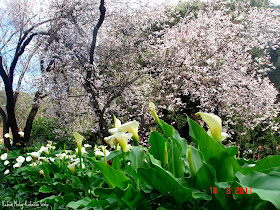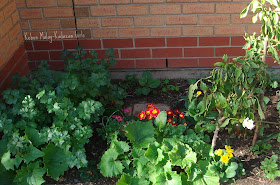The garden seems to know that I am feeling down this week and want to lift my spirit up with a variety of harvest. A few winter tomatoes has also managed to turn red. We harvested all red choi since it will produce flower soon. Pulled out all snowball turnips grown in polystyrene since it is not growing that much and not very productive in our garden. Lettuces are also readily available from the garden.
Italian sprouting broccoli side-shoots constantly need to harvest these days. Lack of enthusiasms on my part last week, causes some side-shoots were harvest late and cause it to flower.
We harvested our first home-grown watermelon radish (seeds from Mr. H author of Subsistence Pattern). Asian greens like tatsoi, pak choi and komatsuna are showing the sign of producing flower buds so in the basket harvest they go. Bloomsdale spinaches, chards and Florance fennels were also harvested last week.
We inter-planted some hon tsai tai (purple-flowered choy sum) in between red onion seedlings which are growing rather slow at the moment to save some space and harvested all of them last week.
Some beetroots, parsnips and Red Russian Kale were also harvested last weekend.
Most of our Asian greens have holes on it courtesy of caterpillars. Surprisingly, we had one yellow capsicum harvested last week.
I will like to wish "Selamat Hari Raya Aidilfitri".
Thank you for the wish too.
Have a safe journey balik kampung and hope you have many good memories on this special festive season in Malaysia.
Ingat-ingat kami di perantauan ya :).
Sigh. ..dalam 10 tahun ini cuma 2 kali je sambut di tanah air yang lain di negara orang.



















































